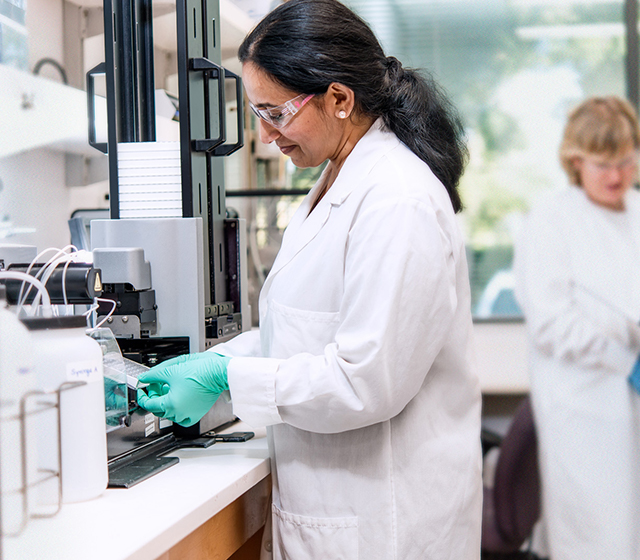Assay Kits
Assay Kits by Disease/Research
Since 2004, AnaSpec has manufactured assay kits for life scientists around the world and we continuously develop new kits, all with accuracy, speed and convenience in mind.
Our SensoLyte® kits are featured in high impact journals and endorsed by customers for their reliability. We offer FRET and Fluorogenic detection-based assays, as well as ELISA kits all categorized by research or disease area.
Neuroscience
Cardiovascular
Cancer & apoptosis
Adhesion & ECM
Epigenetics
Cell and Tissue Biology
Viral & bacterial
Diabetes & Metabolism
Cell Viability & Cytotoxicity
Protease & Enzyme Analysis
Analyte Quantitation
Reporter Enzymes
Assay Detection Methods
Forster resonance energy transfer (FRET) occurs when the excited state energy that is emitted by a fluorophore (donor) is absorbed by a quencher (acceptor) and prevents the fluorophore from emitting a fluorescent signal at its emission wavelength.
The distance dependent energy transfer only occurs when the donor and acceptor are within range of approximately 10-100 angstroms.
In the presence of the target protease, the substrate undergoes proteolytic cleavage separating the fluorophore and quencher resulting in recovery of fluorescence signal that is proportional to the enzyme activity.
AnaSpec’s SensoLyte FRET assay kits feature peptide substrates labeled with our proprietary long wavelength FRET pairs for higher sensitivity.
Fluorogenic protease substrates contain a dye at the peptide C-terminus or N-terminus that releases fluorescence upon proteolytic cleavage at the linkage site between the peptide and dye.
This technology is useful for analysis of exopeptidase activity.
The selectivity for a specific protease activity is enhanced by combining the specificity of an ELISA, with the sensitivity of FRET into a single assay.
This technology is useful when multiple proteases in a single test sample may recognize the same substrate.
In this type of assay, a monoclonal antibody is employed to first pull out the specific protease of interest, before incubation with the protease substrate.
This assay method is the basis for our SensoLyte® Plus MMP-9 and SensoLyte ® Plus MMP-13 Plus assay kits.
ELISA (Enzyme-linked immunosorbent assay) is an immunological assay for the measurement of antibodies, proteins, and antigens in biological samples.
There are several variations of ELISA assays but all utilize a coating of either antibody or antigen to capture and immobilize the molecule of interest onto the assay plate.
In the direct ELISA method, the plate is then treated with a single primary labeled antibody that binds the already immobilized molecule of interest.
In the indirect and sandwich ELISA methods, an unlabeled primary antibody binds the already immobilized molecule of interest, followed by a labeled secondary antibody that recognizes the primary antibody.
The plate is then treated with developer that reacts with the label (ie., HRP, Alkaline phosphatase) to produce a product that generates a spectrophotometric signal proportional to the quantity of test compound in the sample.
FRET Dye & Quencher pairs
Full spectrum of dyes and quenchers covering all detection channels
| Dye (donor) | Quencher (acceptor) | Donor Ex/Em | |
|---|---|---|---|
| Sensolyte® 390 |
Mca | Dnp |
•
325/393 nm |
| Sensolyte® 490 |
EDANS | DABCYL |
•
340/490 nm |
| Sensolyte® 520 |
5-FAM or HyLyte™ Fluor 488 | QXL®520 |
•
494/521 nm |
| Sensolyte® 570 |
5-TAMRA | QXL®570 |
•
547/574 nm |
Assay kit benefits
- Optimized for highly sensitive detection of enzyme activities
- Compatible with high throughput screening (HTS) for use in drug discovery
- One-step homogeneous assays
- Convenient mix-and-read formats (for select proteases)
- iD SensoLyte® specialized services available



